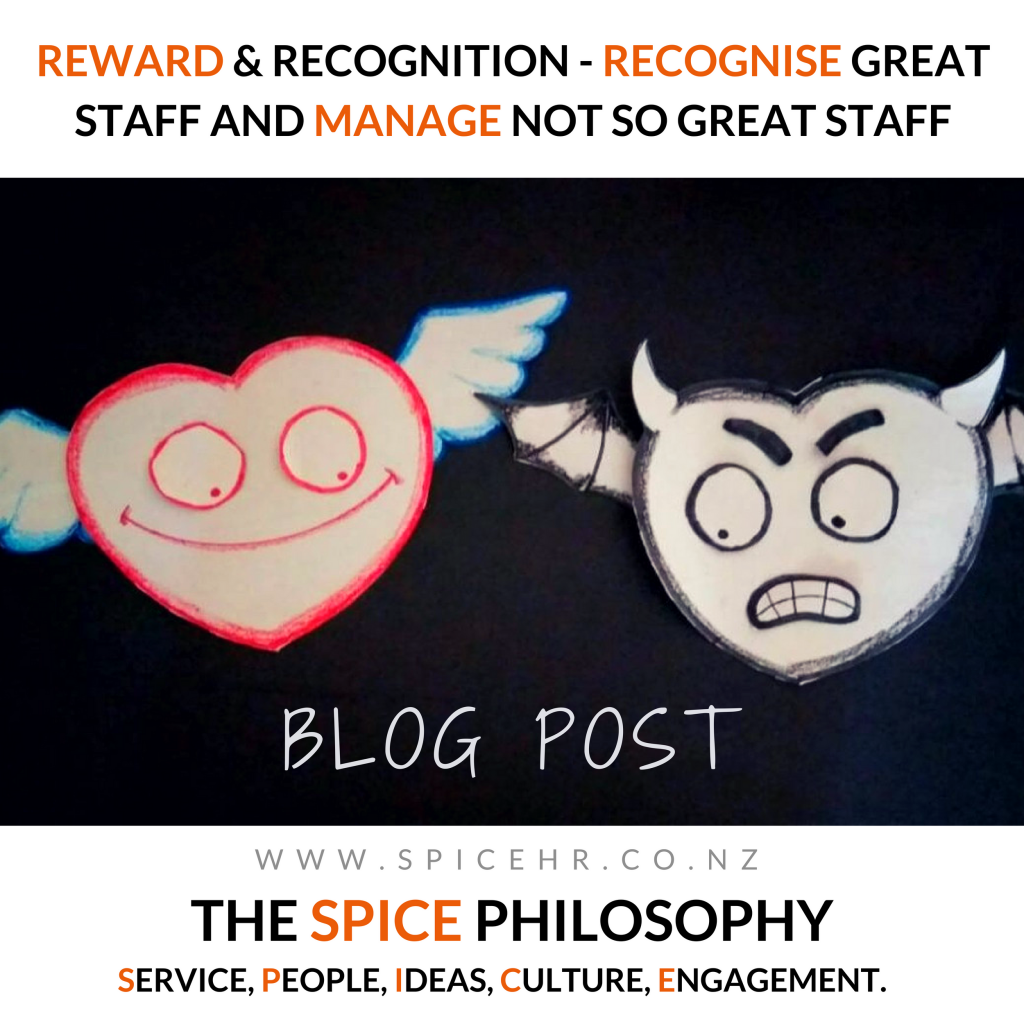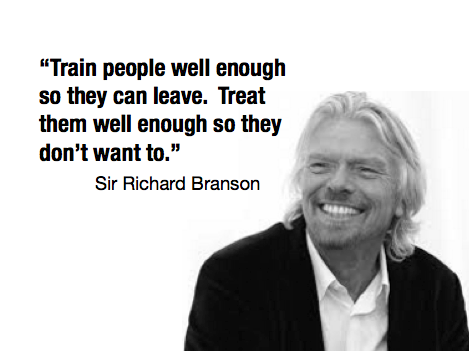
No matter what kind of business you are in, it is the people in your team that will determine its success. Your employees are your most valuable asset and managing them well should be one of your top priorities.
It is no cliché that your team is only as strong as your weakest employee. So, it is in your best interest to create a well-rounded, high performing team.
Good management involves two key areas. The reward and recognition of great employees and dealing appropriately with poor performers.
Here are some effective strategies to guide you with both.
Recognition of Great Performance
We cannot emphasise enough how important it is to show recognition to the valuable employees who help your business succeed. Every team member wants to feel valued and the simple act of showing appreciation will boost motivation, engagement and loyalty. This leads to a high-functioning and positive team environment.
Take time to acknowledge the daily small wins as well as the big successes. Drop in to say thank you in person, or take a minute to personally send an email. Make sure you clearly state what the employee did that was appreciated so they can strive to do it again.
It can also be helpful to publicly acknowledge an individual in front of colleagues. Done in the right way, this can motivate the rest of the team. Just be careful that the recognition is not perceived as favouritism. Share the love around all your team members every time they do something good. Also be aware that public attention can make some people uncomfortable, so do it in a welcoming way.
You know those lovely comments you receive from clients, customers or other team members? Always make sure you pass them on to the relevant staff member and their direct manager.
Rewards
Using tangible rewards can be a great way to show recognition and to give credit where credit is due. You can do this in a number of ways:
- shouting a team lunch after a successful completion of a project
- implementing a bonus scheme,
- granting special leave or an extended lunch break
- having the occasional early finish at the end of the week
These small gestures can go a long way to making people feel appreciated and cost very little to implement in the greater scheme.
Whatever you choose to do, make sure it is genuine recognition. Employee of the month programmes are not necessarily an effective idea. They are considered to be an old-school “ticking the box” style of recognition, that means you have to hand out a reward every month even if there is nothing noteworthy to celebrate.
Instead, put efforts into getting to know your team, understand their personal and professional goals and reward hard-working employees with things that support these ambitions. You can offer them the opportunity to attend courses, conferences and seminars that further their career and at the same time, enhance your business.
As with any management program, ensure your entire team knows the standards and expectations for success and reward. That way, everyone has something to strive for and an equal opportunity to gain reward and recognition within the business.
However managing staff is not always a bed of roses. Let’s now turn our attention to a few ways you can deal with the negative aspects of managing a team!
Dealing with Poor Performance
Managers often struggle with how to deal effectively with consistently poor performers. It can be an unpleasant experience, but if you don’t take the time to address the behaviour, it can have a negative effect on your entire team, and your bottom line.
The impact can cause your best team members to become resentful at carrying the load for the underperformers. It can also reflect negatively on your business as a whole. It could signal to other members of your team and your clients for that matter, that your business is prepared to accept mediocrity. Along with this, you will end up wasting precious time and resources.
So, what can you do about it?
The very first step is to ensure you have clear, concise and up to date Job Descriptions that clearly outline the expectations of each role. Once you have confirmed that the JD’s are reflective of the role requirements, there are a couple of strategies that you can take to deal with poor performance:
Introduce a PIP (Performance Improvement Plan)
A PIP is a great way to help underperformers to reach their potential. The first step is to have a meeting with the employee addressing your concerns. Show them the areas where they are falling down, and then put a plan in place to help them improve. That could include extra training or support, as well as a realistic timeframe and a realistic way to measure the improvement.
The simple act of implementing a PIP can markedly improve performance as the employee is aware of the expectations placed on them. To make the PIP effective, meet with your problematic employee on a regular basis to provide and receive honest feedback on how things are going.
If things are going well then you can celebrate and put the negativity behind you. But if things are not going so well, then it might be time to formalise the process.
Starting the Disciplinary Process
If your underperformer is still not performing to the desired or required level and continues to display a bad attitude, then the next step could be starting the disciplinary process. This is an in depth, specific process that requires formal meetings and written documentation.
If you do not have a specialised team member who is qualified to handle this process, then we really encourage you to seek HR advice. This is not a process that you want to get wrong, as it could involve a personal grievance claim or worse.
Here at Spice HR we are the HR specialists you have been looking for. Get in touch with us for any advice or support that you need for both the positive and negative processes involved in effective people management.



 Alright, we know we said those dreaded three words… Health and Safety. But those words and the policies that support them are a necessary evil at all workplaces regardless of the size or type of business. We can bet you have dotted your I’s and crossed your T’s by having processes in place for safe work practices. But have you considered the health and wellness of your team as part of those processes?
Alright, we know we said those dreaded three words… Health and Safety. But those words and the policies that support them are a necessary evil at all workplaces regardless of the size or type of business. We can bet you have dotted your I’s and crossed your T’s by having processes in place for safe work practices. But have you considered the health and wellness of your team as part of those processes?




